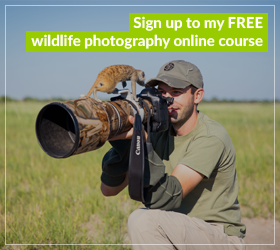We have recently returned from a fantastic trip to Australia, where we visited some beautiful landscapes and enjoyed photographing the country’s unique and varied wildlife.
We started our trip with a night on French Island, home to one of the densest koala populations in the world. Koalas in Australia were almost hunted to extinction during the early 20th century and populations on the mainland are in decline due to disease, habitat loss and the impact of urbanisation. As a result, koalas are regularly taken from French Island to repopulate areas on the mainland.
Next we travelled to the rugged and remote northwest coast of Tasmania in order to photograph Tasmanian Devils in the wild (this will be the subject of a future post). While our nights were taken up with photographing the Tassie Devils, our days were free to explore the wild and beautiful coastline. This gave us a great opportunity to test a new 10-stop Neutral Density filter that we recently bought! This filter cuts out 10-stops of light, allowing us to achieve extremely slow shutter-speeds, even in the middle of the day. The effect of this was to blur the sea and even the clouds as they moved across the sky.
After leaving the coastline, we drove to Cradle Mountain-Lake St Clair National Park. We spent several days there and got treated to the full spectrum of Tasmanian weather… on a couple of occasions we even got snowed on, despite it being the middle of the southern-hemisphere summer!
Wildlife around Cradle Mountain was abundant and we enjoyed stalking wallabies and goofy wombats when the light was not appropriate for landscape photography.
Our next location was Kangaroo Island in South Australia. As its name suggests, the island is home to plenty of kangaroos! These kangaroos are a subspecies of the Western Grey Kangaroo found on the mainland. They emerge to graze shortly before sunset, which presented us with a brief opportunity to photograph them in good light. We also photographed a variety of other creatures such as the bizarre egg-laying echidna.
We were fascinated to find that fossilised forests were exposed along parts of Kangaroo Island’s coast. The first image below shows a fossilised root system that we found under an overhang. Taking the shot involved clinging precipitously to a crumbling cliff-face, high above the crashing ocean! The island also boasts some spectacular coastal features such as Admiral’s Arch, shown in the second picture below. The formations hanging down from the roof are also fossilised tree roots.
The final part of our journey took us to into the heart of Australia’s outback. Five hours drive from Adelaide, lies the spectacular Flinders Ranges – the largest mountain range in South Australia. The Flinders Ranges has an abundance of animal and plant life, however extensive sheep grazing and the invasion of non-native wildlife have taken their toll on the biodiversity of the region. One of the species that has suffered most is the Yellow-footed Rock-wallaby, shown below in its typical environment. On the other hand, emus are common in the Flinders Ranges, and they can often be seen grazing in the more open areas. As shown in the photograph below, it is the male Emu that looks after the chicks, staying with them for up to 7 months in order to protect them and teach them how to find food.
You can find more photographs from Australia in our Australian Wildlife gallery. Feel free to post a comment letting us know which photograph you like best!
















Wow, how do you choose which photos are the best! Really great representation of our gorgeous country and its animals.
I really like the dolphin, the bee and parrots. I have never seen a wombat as cute as the Tassie one. Our Victorian ones are not as cute. I live in the Macedon Ranges in Victoria and we have some great wildlife. We get parrots landing in our garden, I have seen echidnas 10 minutes up the road from us and kangaroos hang out at the local Gisborne gold course. I actually nearly hit a kangaroo on the way home from the supermarket one night!! I will have to try and get some good shots for the nature competition! All the best to you guys, love your work.
Kind Regards – Jill from Oz 🙂